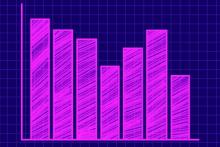Defining AI

Sacha Boucherie and Sarah Huggett report on Elsevier's recently-launched artificial intelligence programme
Artificial intelligence (AI) is a hot topic. Huge investments are made across all sectors, government policy is prioritised, new businesses are sprouting, researchers and data scientists are taken on board in bunches, technology is rapidly adapted to meet new requirements, expertise is promoted and showcased, applications change our daily lives. AI is pervasive.
But, are we all in fact talking about the same kind of AI? And if we are, what is it? How is knowledge on AI created, disseminated, and applied worldwide? These are some of the questions Elsevier is taking on board in their next report, with input from internationally-recognised external experts on the methodology and context.
Maria de Kleijn, SVP analytical services for Elsevier, explained: 'Over the years, we have produced reports mapping research performance on ranging topics of societal relevance, including, among others, brain and neuroscience, sustainability, gender. Diving into the remits of our next one – artificial intelligence – and discussing it with both internal and external experts it very quickly became apparent that even expert opinions on how to define AI vary greatly.
'Our data, metrics, and analytical expertise – we are after all an AI company – combined with input from our network of experts places us in a unique position. This position allowed us to develop a novel approach to defining the field, considering not only the body of research literature but also media sources, patents, and educational texts. This definition then formed the basis of further analytics to map research trends in AI across the United States, China, and Europe.'
The report, scheduled to launch by the end of 2018, employs a novel, bottom-up approach to defining the field. We used a semantic analysis across four different sectors – research, education, technology, media – to discover how the world refers to AI.
We next used this semantic review to apply semi-supervised machine learning to develop a definition of 'the field' AI, effectively using AI to define AI. This approach to develop a subject area definition has not been done before. We also use a wide range of data sources, as the field of AI differs from others in the way that research discoveries are shared. They are often talked about at conferences and not published in journals – hence the importance of providing insights beyond research papers and citations, such as provided by conference papers and usage.
Our analyses cover three regions over 20 years, analysing research performance for China, the European Union, and the United States, including scholarly output and impact as well as analyses around collaboration, mobility, and knowledge transfer across sectors (i.e. academia-corporate collaborations) and geographies (i.e. researcher mobility). Expert contributions complement the quantitative analysis to provide a qualitative dimension to the report.
The AI report and its supplementary materials (raw data and literature), and further analyses and project outputs will become available on the Elsevier AI Resource Center. Any questions can be addressed to ai.program@elsevier.com.
- AI experts involved include: Yuichiro Anzai, Japanese government advisor; Roberto M. Cesar Jr, São Paulo Research Foundation (FAPESP) adjunct coordinator; Dame Wendy Hall, University of Southampton; Lynda Hardman, Amsterdam Data Science Director, Informatics Europe Past-President, Centrum Wiskunde & Informatica Research Leader; Frank van Harmelen, Vrije Universiteit; Prof. Leong, National University of Singapore; Enrico Motta, Open University; C. Raymond Perrault, SRI International; Bernd Stahl, director of the Centre for Computing and Social Responsibility at De Montfort University; Zhenan Sun, Chinese Academy of Science Institute of Automation; Tieniu Tan, Chinese Academy of Science Institute of Automation; Chuan Tang, Chengdu Library and Information Center, Chinese Academy of Sciences; and Liyun Zhao, AI Center, Chinese Ministry of Science & Technology, Institute of Scientific and Technical Information of China.











